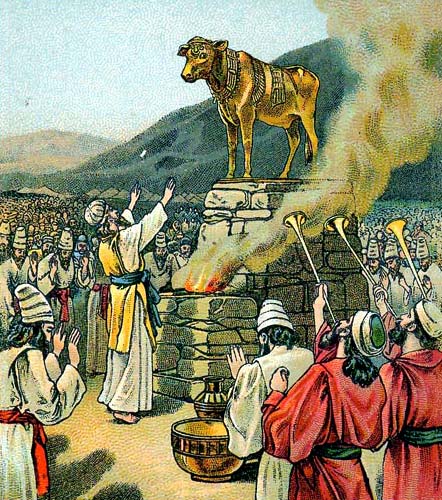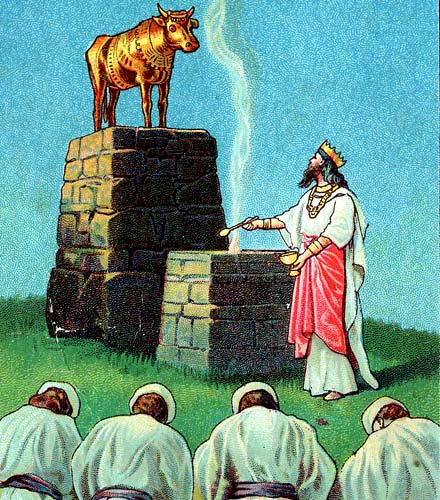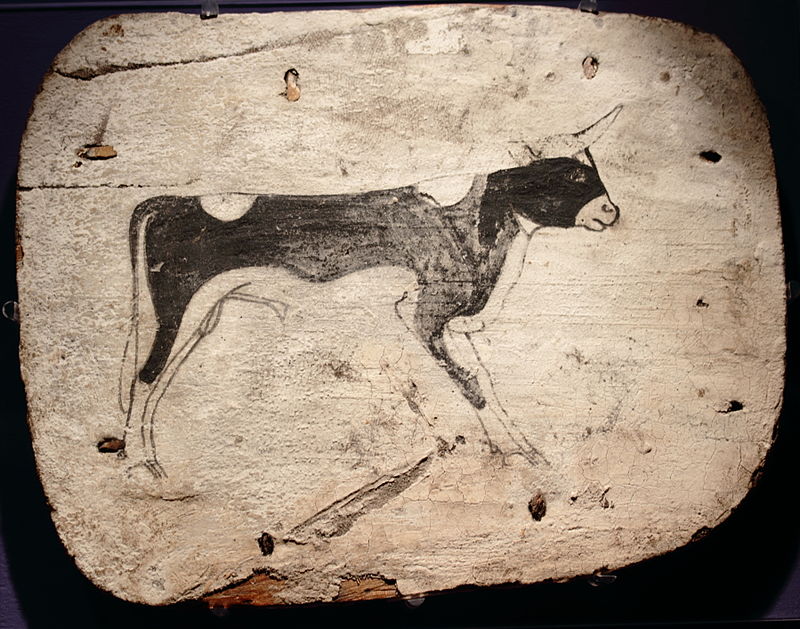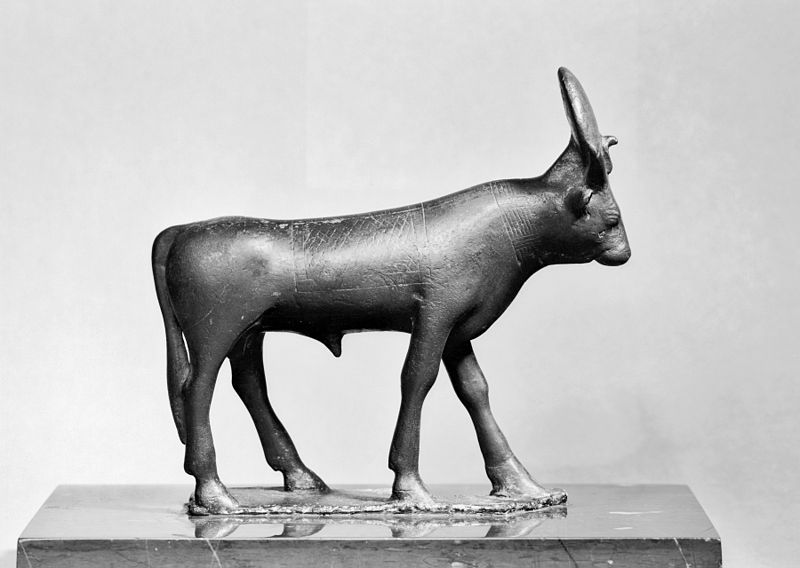
As many of us have heard, the Eskimos have dozens of words for snow because this is so crucial to their daily lives. Although this claim has been discounted by modern linguists, it is nonetheless a well-known linguistic fact that each language specializes in the topics that are most vital to its own speakers. The equivalent in the Bible is the topic of shepherding. The Hebrew language has dozens of words for everything connected with sheep and goats because these were one of the cornerstones of the ancient Israelite economy. One of the most interesting of these many words is עגל egel. The word means calf, a young cow or bull (Bos taurus) but in Hebrew it has a surprising meaning.
Calves appear dozens of times in the Bible. We frequently find calves in lists of sacrificed animals, for example as part of the ceremonial inauguration of Aaron as priest:
On the eighth day Moses called Aaron and his sons and the elders of Israel; and he said to Aaron, “Take a bull calf for a sin offering, and a ram for a burnt offering, both without blemish, and offer them before the Lord…” (Leviticus 9:1-2)
But much more famous than these living calves are two biblical examples of statues of calves made of gold. At the foot of Mount Sinai the Israelites lose faith in Moses and ask Aaron to fashion a golden calf:
He [Aaron] took what they handed him and made it into an idol cast in the shape of a calf, fashioning it with a tool. Then they said, “These are your gods, Israel, who brought you up out of Egypt.” (Exodus 32:4)

Worshiping the golden calf, as in Exodus 32:1-35, illustration from a Bible card published 1901 by the Providence Lithograph Company
A second example of golden calf worship is found in the northern kingdom of Israel under King Jeroboam, who seceded from the southern kingdom of Judah in 928 BCE following the death of King Solomon. In an effort to dissuade his own subjects from making pilgrimages south to Jerusalem (the capital of his adversary, Judah), Jeroboam set up two alternative shrines on either end of his kingdom:
So the king took counsel, and made two calves of gold. He said to the people,“You have gone up to Jerusalem long enough. Here are your gods, O Israel, who brought you up out of the land of Egypt.” He set one in Bethel, and the other he put in Dan. (1 Kings 12:28-29)

Jeroboam’s idolatry, 1 Kings 12:25-33, illustration from a Bible card published 1904 by the Providence Lithograph Company
Why did both Aaron and Jeroboam decide to erect golden statues of specifically of calves? Why this animal and not another? Likely, this has to do with a conscious attempt to imitate a common practice found in the temples of many of the nations in the Ancient Near East. For example in Egypt it was common to worship a calf idol known as Apis. In some cases a king was depicted seated upon the calf as a way of emphasizing his divinity. Perhaps Aaron’s purpose in creating a golden calf was not to create an idol of God but a platform upon which the invisible God would sit.

Ancient Egyptian sarcophagus leg with Apis bull. Musée des beaux-arts in Rennes, in France. End of the third intermediary period.

Apis, a bull, was a living manifestation of the creator-god Ptah and closely related to the rituals for the king. Apis was associated with divine resurrection and the protection of the king. A living bull was selected by the priests of Ptah at Memphis, the center of the cult, and was worshiped in connection with royal coronations and funerary rituals. The image shows the bull crowned with a sun disk (associating him with the sun-god Re) and the Uraeus, the sacred cobra (a symbol of kingship). He is also adorned with a collar around the neck and an elaborate cloth on his back, two elements which are characteristic for the Apis bull.
But what about the word for calf in the original Hebrew? The word egel (עגל) comes from the Hebrew root which means “to roll”, “circular” or “round”. What is the connection between the calf and the verb to roll? Presumably, the calf is known as a “rounder” because his grazing caused him to walk in circles. The word for a grazing path is a maagal, which literally means a circuit. Interesting that in the two stories of golden calves seen above, the calf was regarded by its creator as a beneficial link, something completing the wide circuit which divides the human and divine spheres.





Do you honestly believe that Aaron build a calf ?
A prophet, someone choses from God Himself, building an idol?!
This, by itself alone, is a proof of the corruption of the texts. Let me tell you this:
In the Quraan, the story of the calf is told, but with differences, one of which, is that Aaron did not build it, and when they started worshiping it, he stood against them , this is the way of the prophets, the way of
God chosen people, to fight against paganism, not to indorse it!
Believe in the last message, the message of Islam… It is the way of success in the hereafter and to enter heaven, where no illnes, nor pain, nor sickness, and , no death!
and those who don’t follow Islam will suffer for eternity in the hellfire!
I hope that you be honest with yourself and THINK, can a text that describes a prophet as creating an idol be a text from God? or the text that clearly states that said prophet stood against this !
Good article but it did not answer the question why the calf. Where did the image originate? Why was it a god to the nations around Israel. There is an answer from the Bible.
What books and chapters & verses in the bible the answers are found in please?